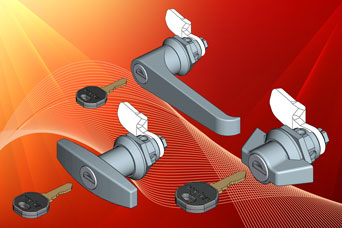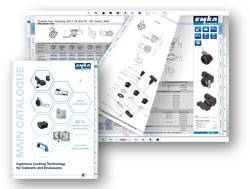In this white paper Andy Billingham discusses how new demands in the area of industrial security drive a continuous development process in tandem with new materials and production technologies. He suggests these demands may be most easily categorised as:
- Very low level – no access restriction but protection of personnel and equipment required – a simple wing knob latch may be sufficient.
- General access limited and equipment protection needed – but a simple key system is needed – perhaps a quarter turn lock with a triangular key.
- Restricted access and equipment protection – but low value or risk – a higher security key system is appropriate, a profile cylinder key lock would be a suitable choice.
- Higher risk or value – perhaps requiring an electronic mechanism e.g. specialist private manufacturing establishments or research centres.
- Very high risk/value e.g. data centres or utilities where a comprehensive logging/monitoring and control system is vital – remotely accessible e.g. via an encrypted internet link.
The white paper explains how in turn these have an effect on usage of materials and the design concept. In this respect the trend is toward increasing sophistication – it’s no longer acceptable to open a control or data cabinet with a screwdriver if you don’t have the key! So where once a wing knob latch was sufficient it is important to consider the need for keylocks – perhaps to IP65 or even IP69 and the option of vibration resistant compression locks which prevent nuisance door opening, as well as more complete gasket pull-down and consistently higher IP sealings.
Other demands call for other materials such as high grade engineering plastics and yet other technologies – leading us to Biometric locking and three tier security. Read the full white paper here: www.emkablog.co.uk/enclosure-hardware-security.




